Case Study for Planning Education: Lessons from Incorporating an Interdisciplinary Teaching Approach and APA Trend Reports in Capstone Planning Studios
Abstract
1. Introduction
1.1. Background of the Planning Programs at the University of Cincinnati
1.2. Interdisciplinary Teaching to ESD in the Planning Studio
2. Materials and Methods
2.1. Course Activities and Students’ Deliverables
2.2. Panel Discussion and 2024 Trends Presentation
- What are the biggest challenges that you see coming up in your industry?
- What direction do you see [your field] going in the future? How do you feel that this ties into planning?
- For students studying the City of Cincinnati in this semester’s capstones, do you see any trends that are very relevant to the city or the region?
3. Results
3.1. Selected Themes from APA Trend Reports
3.2. Relationship Between Selected Themes from APA Trend Reports and SDGs
3.3. DAAPworks Exhibition and GIS Story Map
4. Discussion
5. Conclusions
Author Contributions
Funding
Institutional Review Board Statement
Informed Consent Statement
Data Availability Statement
Acknowledgments
Conflicts of Interest
Appendix A. Themes of APA Trend Reports and Projects of BUP and MCP Students
| Project Title and Description |
| BUP Projects (Group and Individual) |
Title: Smart Cincinnati—A Transformative Process of Smart Mobility Systems
|
| MCP Projects (Group and Individual) |
Title: Urban 3D Print Revolution
|
Appendix B. Capstone Studio Schedule
| Week | Sessions | Outcomes |
| 1 |
|
|
| 2 |
|
|
| 3 |
|
|
| 4 |
|
|
| 5 |
|
|
| 6–7 |
| |
| Collaborative planning process | ||
| 8 |
|
|
| Refining the final works | ||
| 9–15 |
|
|
| 16 |
|
|
References
- Shilon, M. Effective Methodologies to Study Affects: New Tools for Engaging with Socio-Spatial Relations. Int. J. Qual. Methods 2023, 22, 1–22. [Google Scholar] [CrossRef]
- Watson, V. Conflicting Rationalities: Implications for Planning Theory and Ethics. Plan. Theory Pract. 2004, 4, 395–407. [Google Scholar] [CrossRef]
- 2024 Trend Report for Planners. Available online: https://www.planning.org/publications/document/9284143/ (accessed on 4 June 2024).
- Kurt, S. An Analytic Study on the Traditional Studio Environments and the Use of the Constructivist Studio in the Architectural Design Education. Procedia—Soc. Behav. Sci. 2009, 1, 401–408. [Google Scholar] [CrossRef][Green Version]
- Park, H.Y.; Licon, C.V.; Sleipness, O.R. Teaching Sustainability in Planning and Design Education: A Systematic Review of Pedagogical Approaches. Sustainability 2022, 14, 9485. [Google Scholar] [CrossRef]
- Galan, J.; Kotze, D.J. Pedagogy of Planning Studios for Multidisciplinary, Research-Oriented, Personalized, and Intensive Learning. J. Plan. Educ. Res. 2024, 44, 1096–1108. [Google Scholar] [CrossRef]
- Moosavi, S.; Bush, J. Embedding Sustainability in Interdisciplinary Pedagogy for Planning and Design Studios. J. Plan. Educ. Res. 2024, 44, 576–589. [Google Scholar] [CrossRef]
- Neuman, M. Teaching Collaborative and Interdisciplinary Service-Based Urban Design and Planning Studios. J. Urban Des. 2016, 21, 596–615. [Google Scholar] [CrossRef]
- Neuman, M. The Collaborative Interdisciplinary Studio. In Urban Book Series; Springer: Berlin/Heidelberg, Germany, 2018; pp. 269–292. [Google Scholar]
- School of Planning. 2012 School of Planning, School Book; Auffrey, C., Wang, X., Eds.; College of Design, Architecture, Art, and Planning: Cincinnati, OH, USA, 2012. [Google Scholar]
- Planning Accreditation Board. History of Accreditation in Planning Education. Available online: https://www.planningaccreditationboard.org/wp-content/uploads/2021/04/PABhistory.pdf (accessed on 23 November 2024).
- Hoyt, L.M. A Core Commitment to Service-Learning: Bridging Planning Theory and Practice. In From the Studio to the Streets: Service-Learning in Planning and Architecture; Hardin, M.C., Eribes, R., Poster, C., Eds.; Taylor & Francis: Abingdon, UK, 2023; ISBN 978-1-00-097748-6. [Google Scholar]
- Arefi, M.; Triantafillou, M. Reflections on the Pedagogy of Place in Planning and Urban Design. J. Plan. Educ. Res. 2005, 25, 75–88. [Google Scholar] [CrossRef]
- Friedmann, J. The Core Curriculum in Planning Revisited. J. Plan. Educ. Res. 1996, 15, 89–104. [Google Scholar] [CrossRef]
- Baber, T.; Fortenberry, N. The Academic Value of Cooperative Education: A Literature Review. In Proceedings of the 2008 Annual Conference & Exposition, Pittsburgh, PA, USA, 22–25 June 2008; pp. 13.1199.1–13.1199.6. [Google Scholar]
- Levkoe, C.; Brail, S.; Daniere, A. Engaged Pedagogy and Transformative Learning in Graduate Education: A Service Learning Case Study. Can. J. High. Educ. 2014, 44, 68–85. [Google Scholar] [CrossRef]
- Shepherd, A.; Cosgrif, B. Problem-Based Learning: A Bridge between Planning Education and Planning Practice. J. Plan. Educ. Res. 1998, 17, 348–357. [Google Scholar] [CrossRef]
- Sieh, L.; Frank, A.I. Designing Impact Evaluation for Students’ Engagement with Communities in Planning Education. J. Plan. Educ. Res. 2022, 42, 231–243. [Google Scholar] [CrossRef]
- Planning Accreditation Board. Draft 1 of Proporsed Amendments to 2022 PAB Accreditation Standard and Criteria 2024; Planning Accreditation Board: Chicago, IL, USA, 2024. [Google Scholar]
- UN General Assembly. Transforming Our World: The 2030 Agenda for Sustainable Development Resolution Adopted by the General Assembly on 25 September 2015. Available online: https://www.bing.com/search?pglt=171&q=UN+General+Assembly.+(2015)+Transforming+our+world%3A+the+2030+Agenda+for+Sustainable+Development+Resolution+Adopted+by+the+General+Assembly+on+25+September+2015%2C+42809&cvid=c3bcd2cef7aa42ee88949f97068d512c&gs_lcrp=EgRlZGdlKgYIABBFGDkyBggAEEUYOTIICAEQ6QcY_FXSAQcyMzhqMGoxqAIAsAIA&FORM=ANNAB1&adppc=EDGEESS&PC=DCTS (accessed on 23 November 2024).
- UN. The New Urban Agenda. Adopted at the United Nations Conference on Housing and Sustainable Urban Develop-Ment (Habitat III) in Quito, Ecuador; UN: New York, NY, USA, 2017. [Google Scholar]
- WBG. 2023 Global Economic Prospects, January 2023; World Bank Group: Washington, DC, USA, 2023. [Google Scholar]
- APA. 2022 Trend Report for Plannners; American Planning Association; Lincoln Institute of Land Policy: Cambridge, MA, USA, 2022. [Google Scholar]
- APA. 2023 Trend Report for Planners; American Planning Association; Lincoln Institute of Land Policy: Cambridge, MA, USA, 2023. [Google Scholar]
- APA. 2024 Trend Report for Planners; American Planning Association; Lincoln Institute of Land Policy: Cambridge, MA, USA, 2024. [Google Scholar]
- APA. Join as a Student. Available online: https://www.planning.org/join/students/ (accessed on 23 November 2024).
- Lincoln Institute of Land Policy. 2022–2023 Annual Report_Finding Answers in Land; Lincoln Institute of Land Policy: Cambridge, MA, USA, 2023. [Google Scholar]
- Hirt, S.; Luescher, A. Collaboration between Architects and Planners in an Urban Design Studio: Potential for Interdisciplinary Learning. J. Des. Res. 2007, 6, 422. [Google Scholar] [CrossRef]
- Mokski, E.; Filho, W.L.; Sehnem, S.; Andrade Guerra, J.B.S.O.D. Education for Sustainable Development in Higher Education Institutions: An Approach for Effective Interdisciplinarity. Int. J. Sustain. High. Educ. 2022, 24, 96–117. [Google Scholar] [CrossRef]
- Gantogtokh, O.; Quinlan, K.M. Challenges of Designing Interdisciplinary Postgraduate Curricula: Case Studies of Interdisciplinary Master’s Programmes at a Research-Intensive UK University. Teach. High. Educ. 2017, 22, 569–586. [Google Scholar] [CrossRef]
- Lozano, R. Diffusion of Sustainable Development in Universities’ Curricula: An Empirical Example from Cardiff University. J. Clean. Prod. 2010, 18, 637–644. [Google Scholar] [CrossRef]
- Sebastian, R. Multi-Architect Design Collaboration on Integrated Urban Complex Development in the Netherlands. J. Des. Res. 2017, 3, 1–15. [Google Scholar] [CrossRef]
- Neuman, M.; Perrone, C.; Mossa, A. Applied Research by Design: An Experimental Collaborative and Interdisciplinary Design Charrette. Eur. Plan. Stud. 2022, 30, 1013–1033. [Google Scholar] [CrossRef]
- Van Der Knaap, W. Embedding Transdisciplinarity in a Spatial Planning Curriculum. Plan. Pract. Res. 2022, 37, 489–496. [Google Scholar] [CrossRef]
- Kyngäs, H. Inductive Content Analysis. In The Application of Content Analysis in Nursing Science Research; Kyngäs, H., Mikkonen, K., Kääriäinen, M., Eds.; Springer International Publishing: Cham, Switzerland, 2020; pp. 13–21. ISBN 978-3-030-30199-6. [Google Scholar]
- Elo, S.; Kääriäinen, M.; Kanste, O.; Pölkki, T.; Utriainen, K.; Kyngäs, H. Qualitative Content Analysis: A Focus on Trustworthiness. Sage Open 2014, 4, 2158244014522633. [Google Scholar] [CrossRef]
- DAAPworks 2024. Available online: https://daap.uc.edu/prospective-students/campaigns/daapworks-24.html (accessed on 23 November 2024).
- Maryanti, R.; Rahayu, N.I.; Muktiarni, M.; Husaeni, D.F.A.; Hufad, A.; Sunardi, S.; Nandiyanto, A.B.D. Sustainable Development Goals (Sdgs) in Science Education: Definition, Literature Review, and Bibliometric Analysis. J. Eng. Sci. Technol. 2022, 17, 161–181. [Google Scholar]
- BUP Capstone. Available online: https://www.sopdaapworks.com/bupcapstone (accessed on 16 January 2025).
- Christmann, G.; Singh, A.; Stollmann, J.; Bernhardt, C. Visual Communication in Urban Design and Planning: The Impact of Mediatisation(s) on the Construction of Urban Futures. Urban Plan. 2020, 5, 1–9. [Google Scholar] [CrossRef]
- Devisch, O.; Huybrechts, L.; de Ridder, R. Participatory Design Theory: Using Technology and Social Media to Foster Civic Engagement; Routledge Research in Planning and Urban Design; Routledge: Boca Raton, FL, USA; Taylor & Francis Group: London, UK; New York, NY, USA, 2019; ISBN 978-1-138-08768-2. [Google Scholar]
- Silva, C.N. (Ed.) Handbook of Research on E-Planning: ICTs for Urban Development and Monitoring; IGI Global: Hershey, PA, USA, 2010; ISBN 978-1-61520-929-3. [Google Scholar]
- Slingerland, G.; Murray, M.; Lukosch, S.; McCarthy, J.; Brazier, F. Participatory Design Going Digital: Challenges and Opportunities for Distributed Place-Making. Comput. Support. Coop. Work CSCW 2022, 31, 669–700. [Google Scholar] [CrossRef]

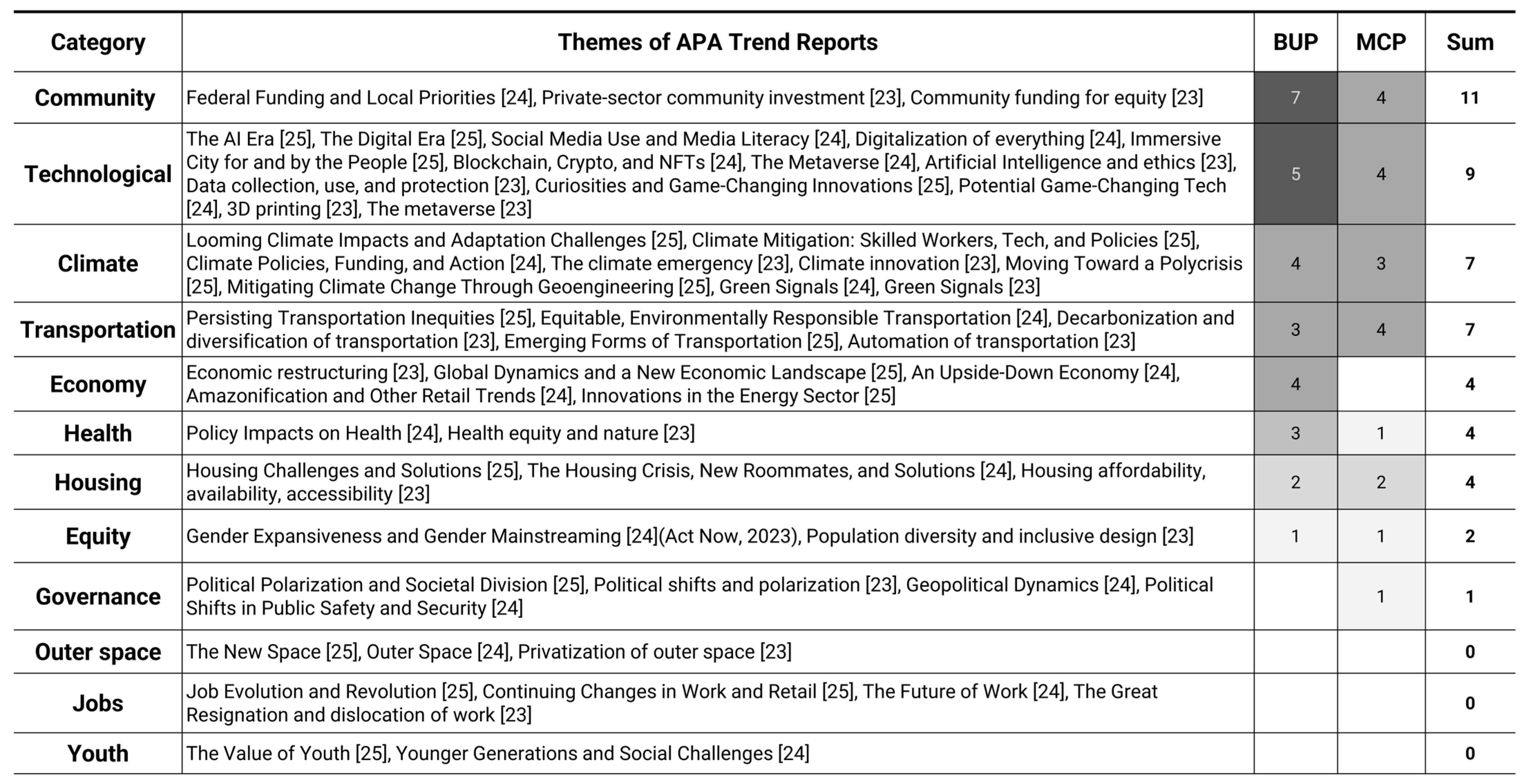
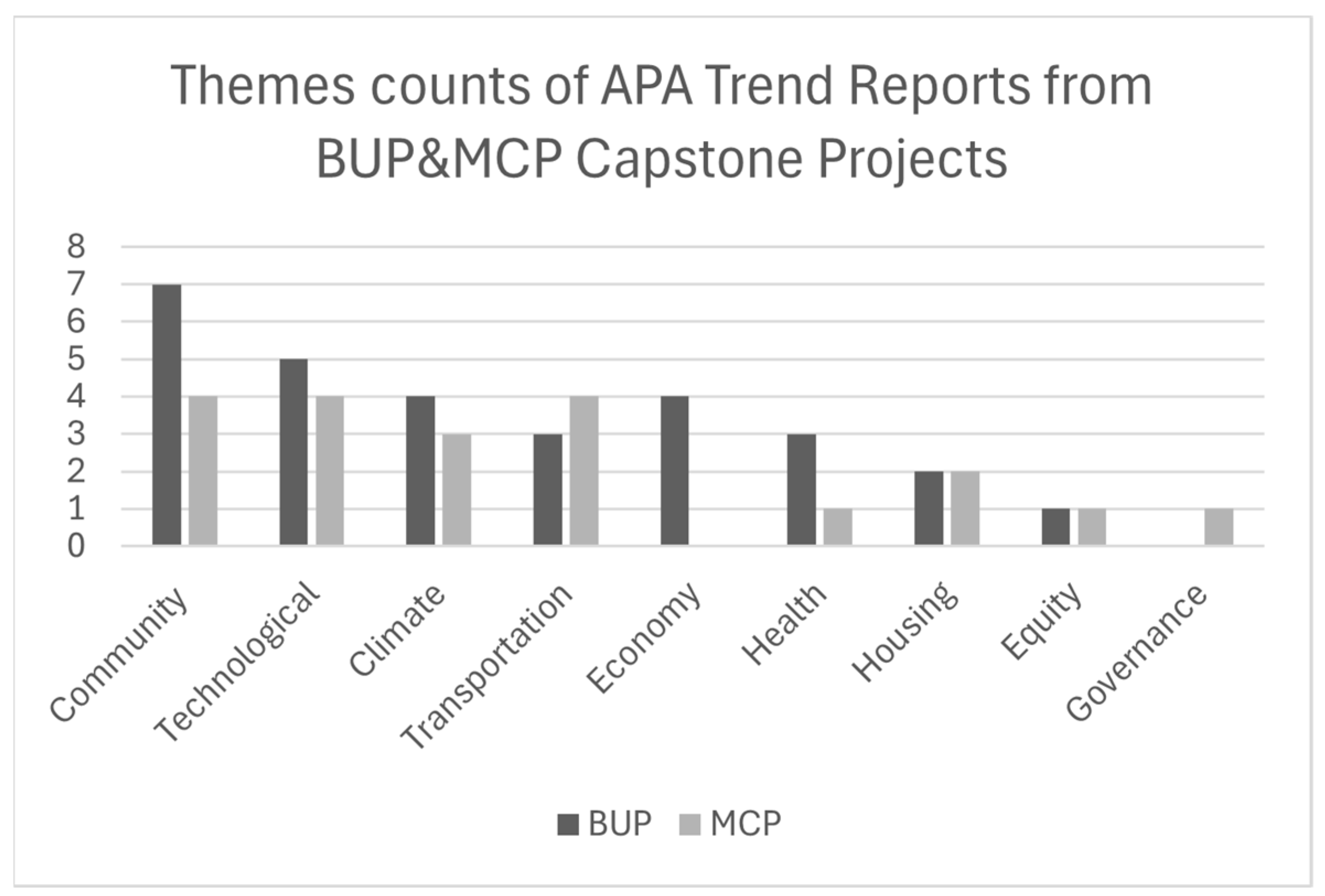

| Title | Project | Description |
|---|---|---|
| [BUP] Eco-Distribute Cincinnati: Pioneering Sustainable Delivery Solutions for a Smarter Cincinnati | 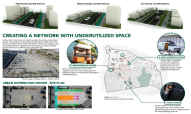 | The project’s vision is to revolutionize urban deliveries and create a city-wide sustainable delivery system with the use of cutting-edge delivery technology, underutilized spaces, and streetscape redesign to complete emission free last-mile delivery. |
| [BUP] Destination Cincinnati: Making Cincinnati into a Climate Haven |  | The goal is to turn Cincinnati into a climate haven for climate migrants, providing them with housing, community resources, and opportunities, creating six new housing typologies, a downtown community campus with educational resources, recreational opportunities and programming, multiple job centers and co-working spaces, social housing, and host family programs, and so much more. |
| [BUP] Beyond the Coffeehouse: Reimagining Third Places for the Modern Era | 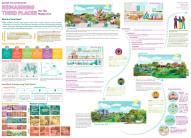 | Due to car-centric urban planning, Cincinnati lacks sufficient social spaces; as society shifts towards tech-centric lifestyles, social opportunities diminish, highlighting the need for people-centric gathering places. The project envisions third spaces designed by and for the people, fostering diverse connections and community, promoting in-person interaction, and sparking imagination. |
| [MCP] Clean Air Mobility: Cincinnati’s Route to Lower Pollution and Smarter Mobility | 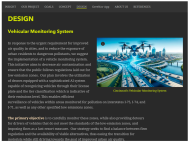 | The project focuses on utilizing AI-powered drone surveillance to monitor air pollution, vehicle identification, and GPS navigation to provide alternative mobility solutions and implement a pricing strategy imposing higher charges on less efficient vehicles, aimed at enhancing air quality. |
| [MCP] Urban 3D Print Revolution Project | 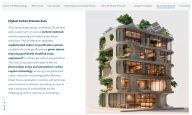 | Urban 3D Print Revolution tied together technology, housing, and again, to a lesser extent, sustainability to explore affordable and sustainable housing solutions. 3D-printed homes would be customized to make the buildings resilient to the environmental conditions and concerns found in different areas of Cincinnati. |
| [MCP] Reconnected, Gender Inclusive Communities Project | 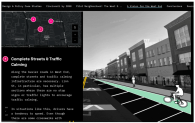 | The project integrated equity and transportation, using both design and policy to advocate for the reintegration of neighborhoods torn apart by transportation infrastructure. The intention is to increase the inclusivity and mobility of gender minorities with a pilot project in a Cincinnati neighborhood exhibiting multiple, intersectional social issues. |
Disclaimer/Publisher’s Note: The statements, opinions and data contained in all publications are solely those of the individual author(s) and contributor(s) and not of MDPI and/or the editor(s). MDPI and/or the editor(s) disclaim responsibility for any injury to people or property resulting from any ideas, methods, instructions or products referred to in the content. |
© 2025 by the authors. Licensee MDPI, Basel, Switzerland. This article is an open access article distributed under the terms and conditions of the Creative Commons Attribution (CC BY) license (https://creativecommons.org/licenses/by/4.0/).
Share and Cite
Park, H.Y.; Palazzo, D.; Hollstein, L. Case Study for Planning Education: Lessons from Incorporating an Interdisciplinary Teaching Approach and APA Trend Reports in Capstone Planning Studios. Sustainability 2025, 17, 1294. https://doi.org/10.3390/su17031294
Park HY, Palazzo D, Hollstein L. Case Study for Planning Education: Lessons from Incorporating an Interdisciplinary Teaching Approach and APA Trend Reports in Capstone Planning Studios. Sustainability. 2025; 17(3):1294. https://doi.org/10.3390/su17031294
Chicago/Turabian StylePark, Hye Yeon, Danilo Palazzo, and Leah Hollstein. 2025. "Case Study for Planning Education: Lessons from Incorporating an Interdisciplinary Teaching Approach and APA Trend Reports in Capstone Planning Studios" Sustainability 17, no. 3: 1294. https://doi.org/10.3390/su17031294
APA StylePark, H. Y., Palazzo, D., & Hollstein, L. (2025). Case Study for Planning Education: Lessons from Incorporating an Interdisciplinary Teaching Approach and APA Trend Reports in Capstone Planning Studios. Sustainability, 17(3), 1294. https://doi.org/10.3390/su17031294






